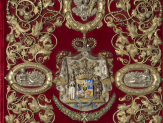Honorary Citizen Certificate of Field Marshal I.F.Paskevich
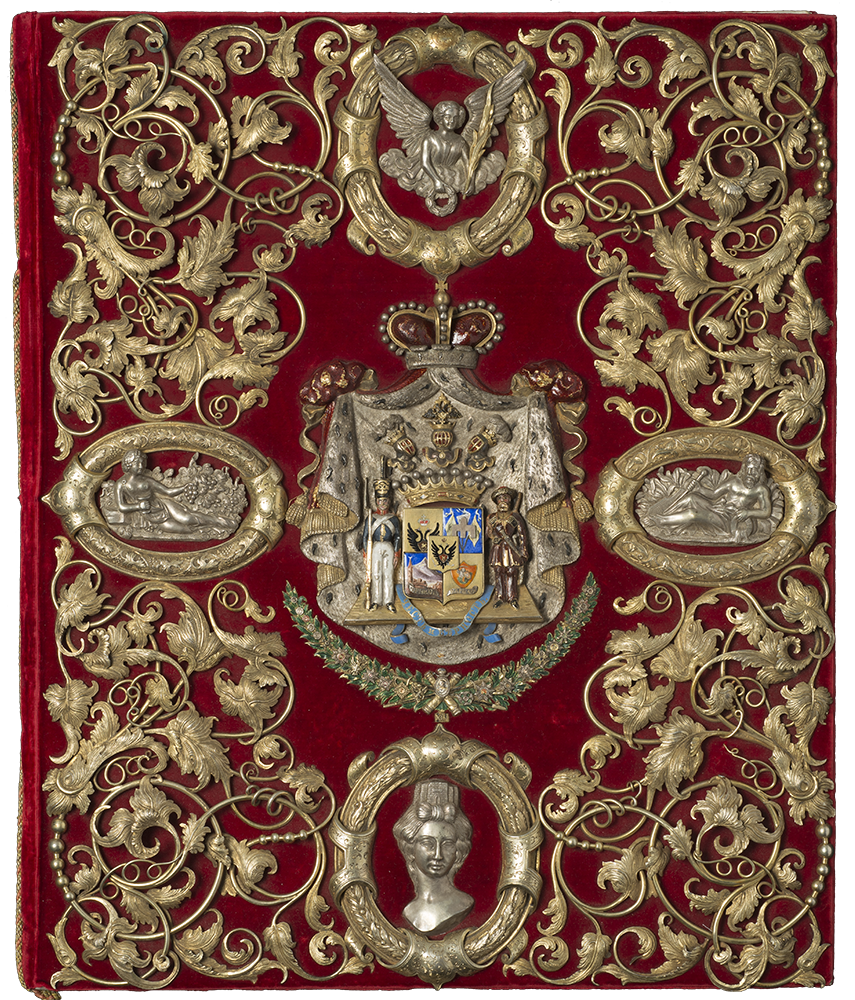
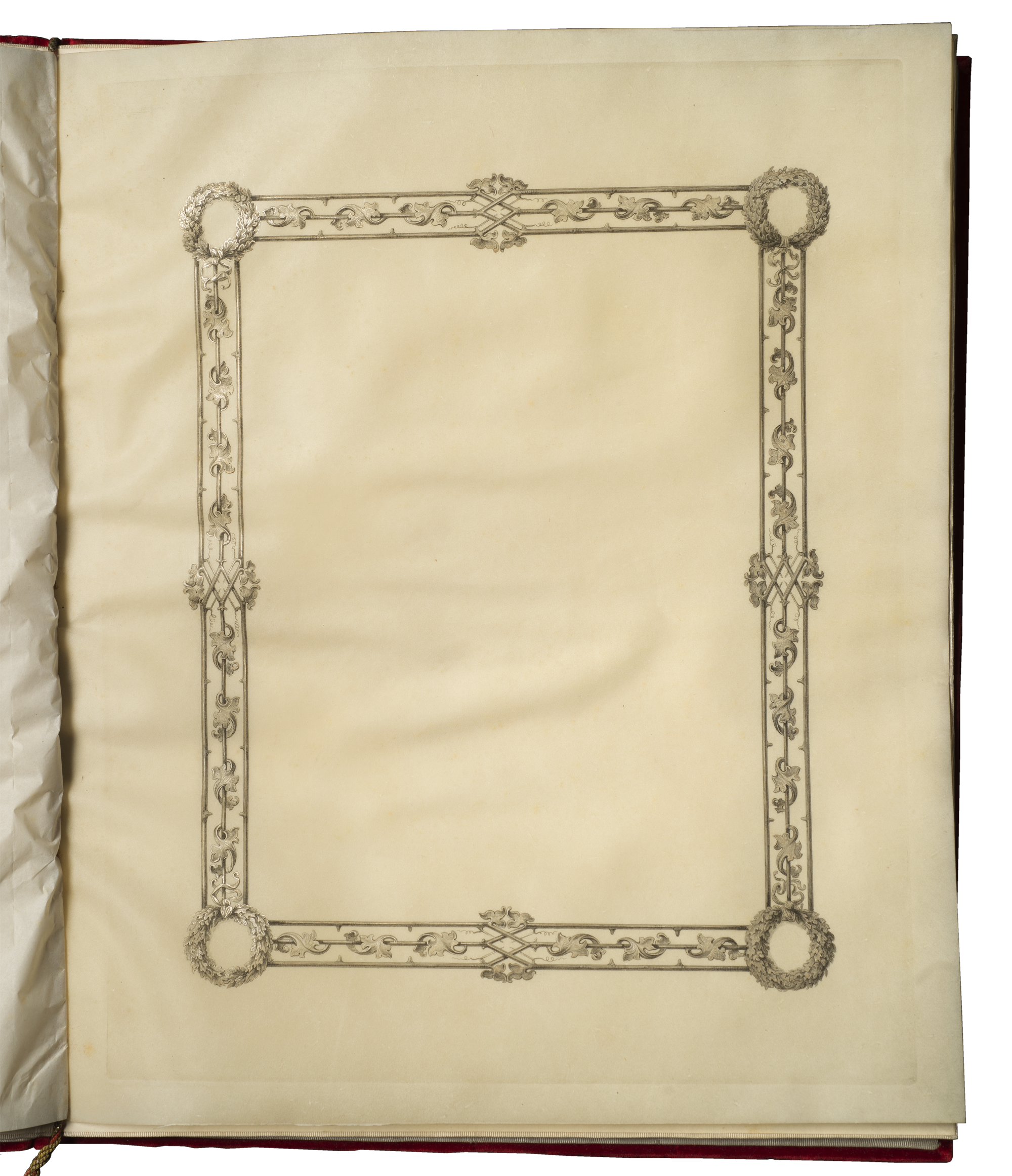
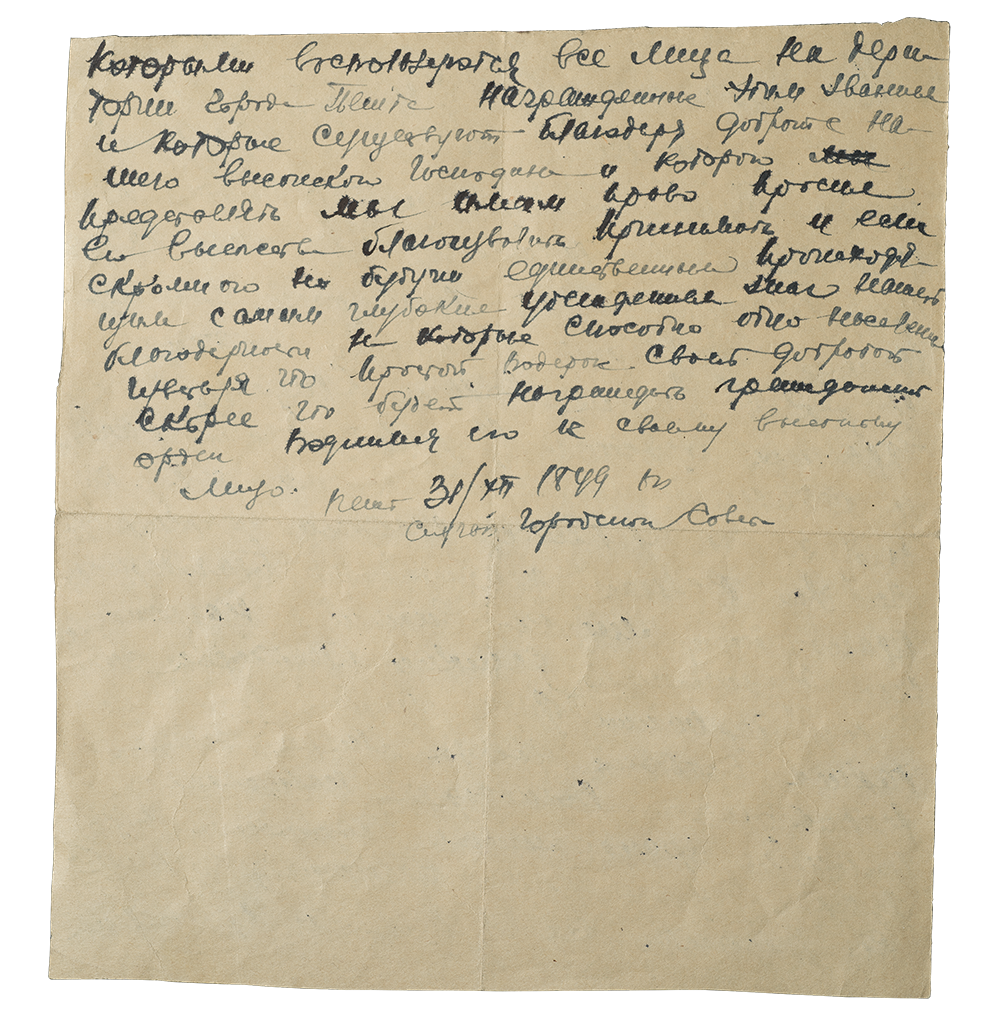
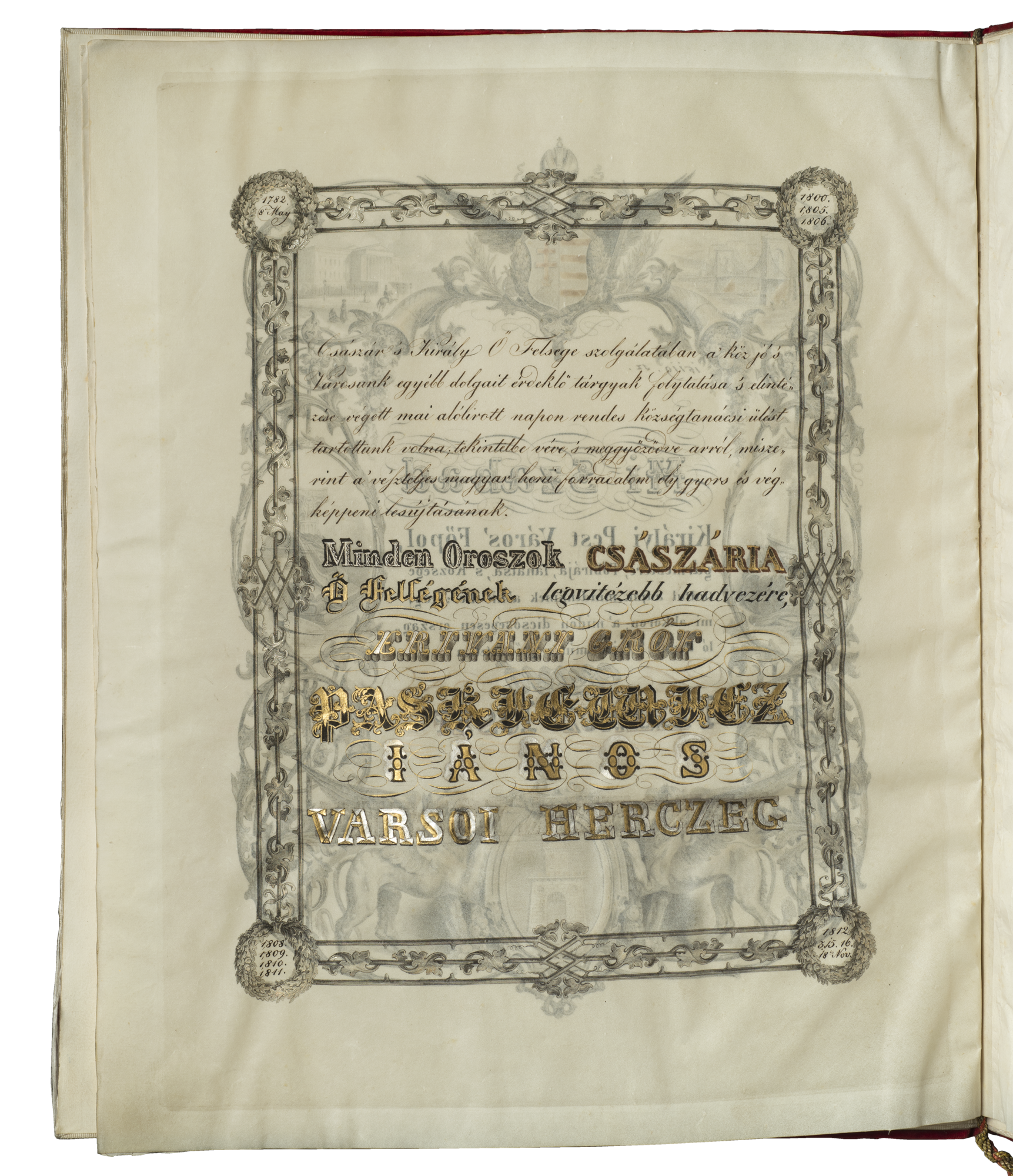
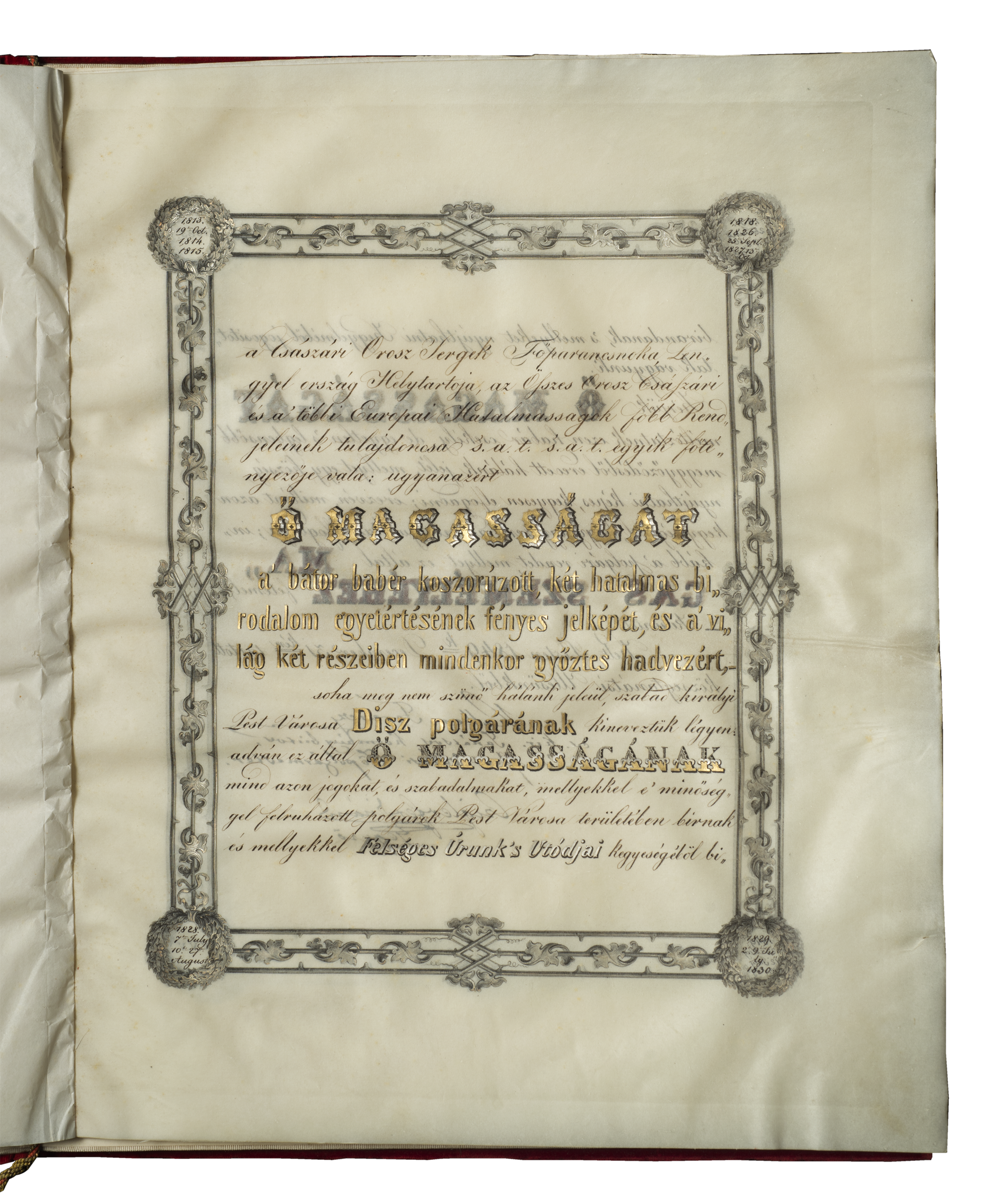

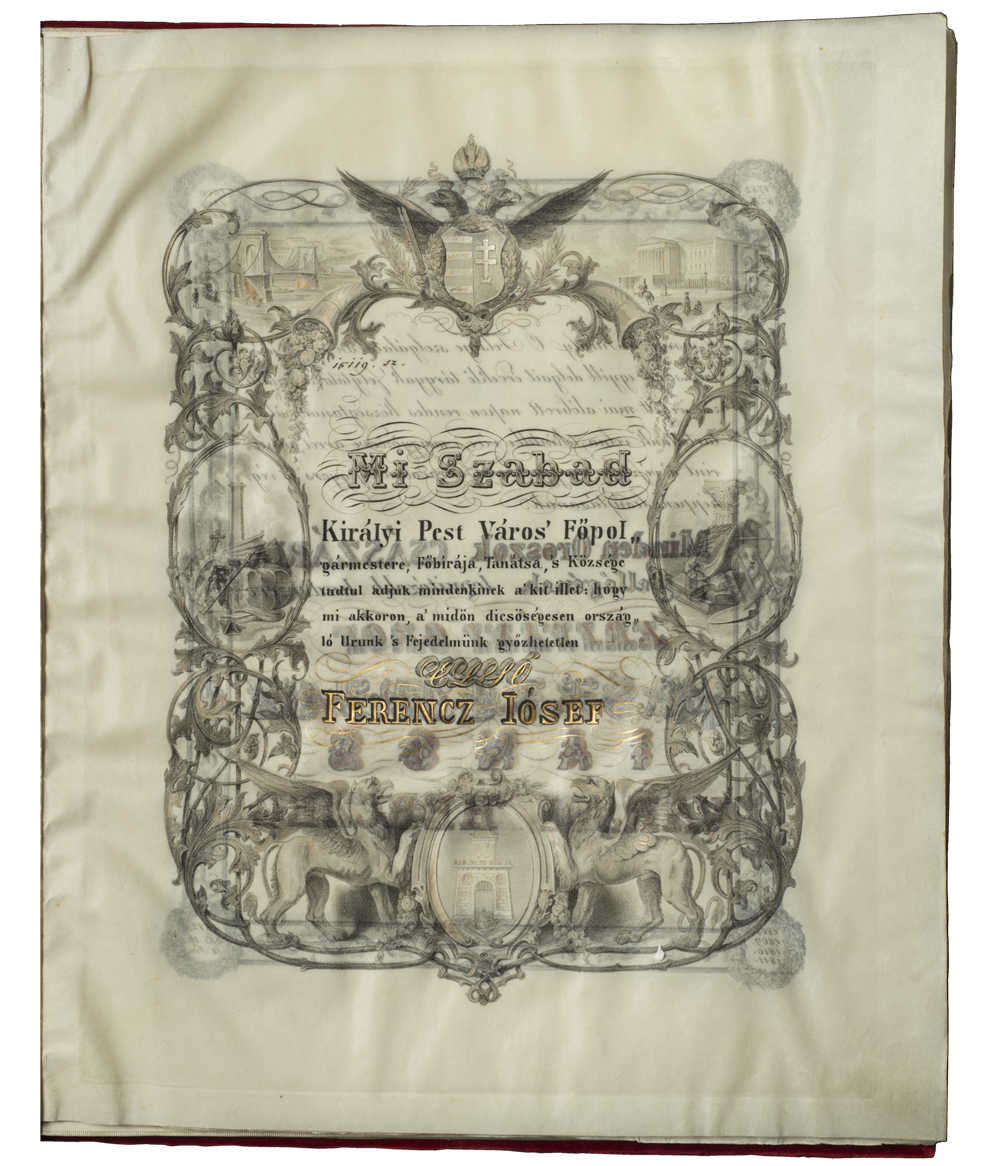
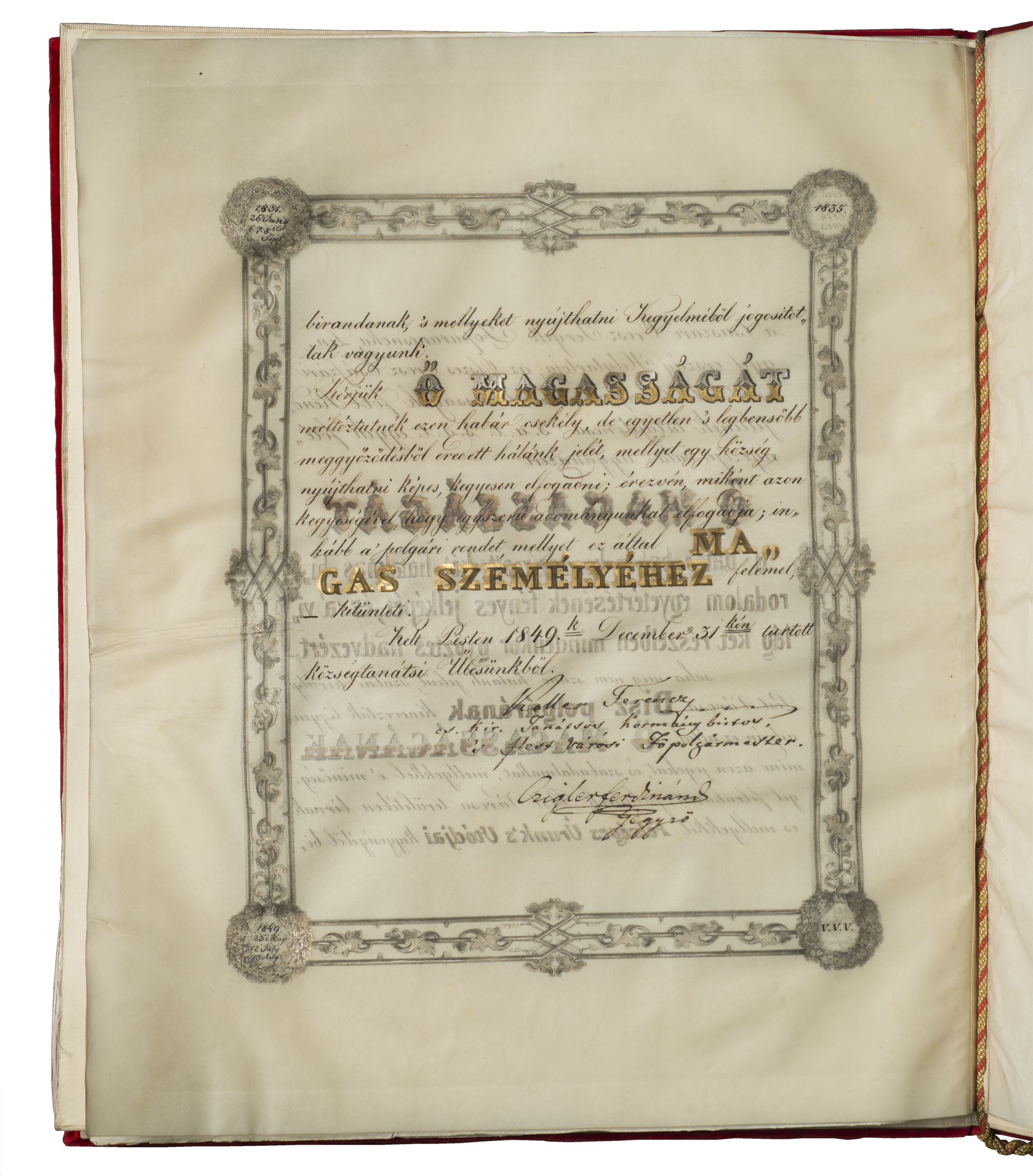
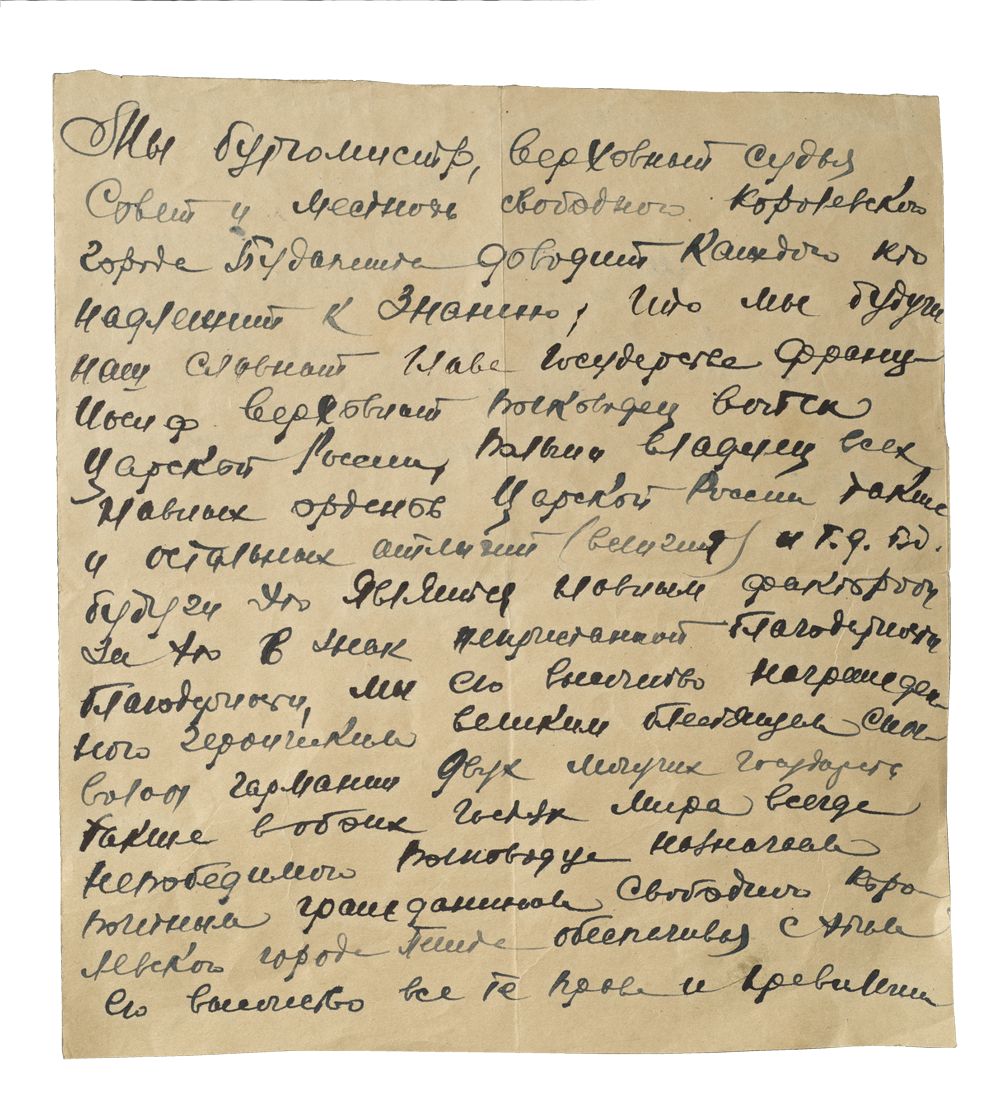
In 1848 Europe witnessed a wave of revolutions in France, German states, Hungary, Austria. At the request of the young Austrian emperor Franz Joseph, Russian army under the command of Field Marshal I.F.Paskevich was sent to Hungary to fight the revolution. In August 1849, the Hungarian rebels surrendered. A Certificate of Honorary Citizen of the free royal town Budapest was presented to Paskevich among other gifts on December 31, 1849.
More information...On the front side of the folder, in the center there is a silver coat of arms of Paskevich-Erivansky. Below is a chased head of a young woman with a crown in the shape of a castle – it’s a symbolic image of the patron of Budapest. On the back of the folder in the center there is chased gold-plated silver armature with the symbols of industry, trade, art and science. The red wax seal in a round gold-plated silver box is attached with a string to the folder. On the box there is a head-and-shoulders portrait of Prince Paskevich-Erivansky; on the seal there is the coat of arms of Budapest and the date “1844”. The folder is decorated inside with white moire. In the folder there is the certificate of three sheets (two sheets with the text on both sides, and one has an ornamental frame with inscription).





